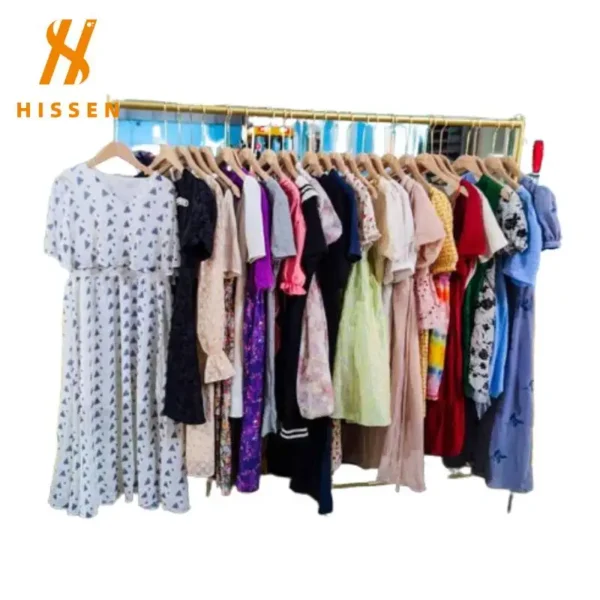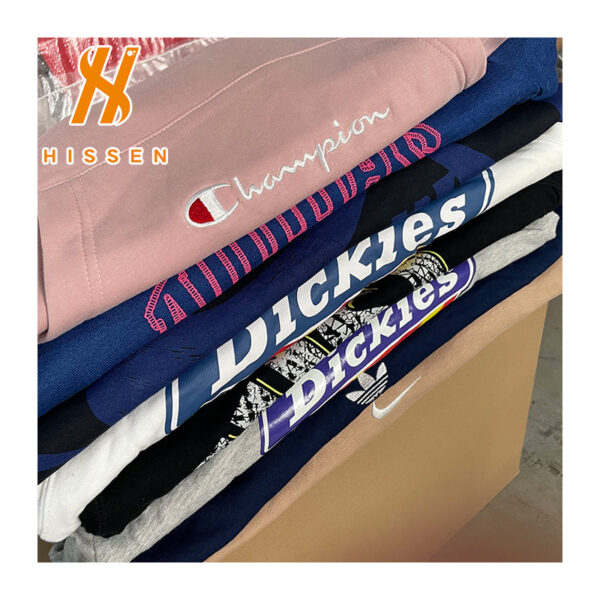If you run a thrift shop, sell on Depop, or manage any kind of clothing business, you know that your success depends on one thing: having great products to sell. But getting quality, in-demand clothing can be expensive and time-consuming. That’s why so many smart resellers are turning to branded clothing bales. These are large, wholesale bundles of second-hand clothes from brands everyone knows and loves, sold at a fraction of the original price. This guide will walk you through exactly what they are, where to find them, and how you can build a profitable business around them.

What Are Branded Clothing Bales?
Let’s start with the basics. Imagine a giant, tightly packed cube of clothing, wrapped up and sold by weight—that’s a bale. A branded clothing bale, as the name suggests, is a special selection that focuses on clothes from popular, recognizable brands. We’re not just talking about high-end luxury designers. More often, you’ll find the brands that people search for and wear every single day. Think sportswear giants like Nike and Adidas, timeless denim from Levi’s, workwear staples like Carhartt, and popular fashion brands like Zara or Tommy Hilfiger.
where did these branded clothing bales come from? They are typically sourced from public donations and textile collection programs in places like Europe and the USA. Instead of ending up in a landfill, these clothes are sent to massive sorting facilities. There, trained workers go through mountains of garments by hand, piece by piece. Their job is to sort them into different categories and, most importantly, to grade them based on quality. This grading system is crucial for you as a buyer.
Here’s a simple breakdown of what the grades usually mean:
- Cream Grade (or Grade A+): This is the best of the best. These are items that look new or have been barely worn. They have no visible flaws—no stains, no rips, no fading. Finding a bale of “cream” clothing is like hitting the jackpot, as every piece is almost instantly ready to be sold at a premium price.
- Grade A: This is still excellent quality and makes up the bulk of most resellers’ inventory. An item in this grade is in great used condition. It might show very light signs of wash or wear, but it has no significant flaws. It’s the reliable, high-quality stock you can depend on.
- Grade B: These items are still wearable and sellable, but they will have small, noticeable flaws. This could be a small, faint stain, some color fading, a missing button, or a tiny pinhole. For resellers who are willing to do a little cleaning or minor repair work, Grade B bales can offer fantastic value for the money.
Beyond quality grades, bales are also often sorted by category. You can buy bales that are specifically “Men’s Sportswear,” “Women’s Summer Dresses,” “Vintage T-Shirts,” or “Kids’ Mixed Clothing.” This allows you to purchase the exact type of inventory your specific customers are looking for. In short, buying a bale gives you a huge volume of curated, in-demand clothing in one shot, which is the perfect starting point for stocking your business.
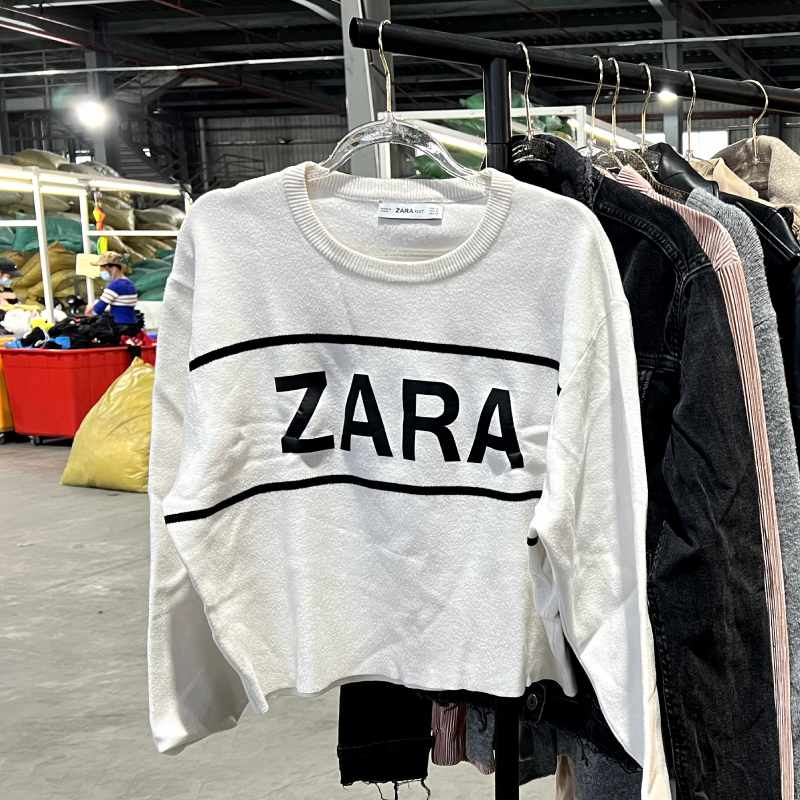
Where to Find These Bales for Sale?
Finding a reliable source for your bales is the most important step in building your business. The quality of your supplier directly impacts the quality of your inventory and, ultimately, your profits. So, where should you start looking? There are a few main channels, each with its own pros and cons.
1. Direct From the Source: Wholesale Suppliers
This is the best and most recommended route. Wholesale suppliers are the companies that operate the sorting facilities we talked about earlier. They are the original source. Going directly to them means you cut out the middleman.
Pros: You generally get the best pricing. The quality is often more consistent because you’re building a relationship with the source. Over time, a good supplier (like us!) will get to know your needs and can help you find the exact type of stock that works for your business. There’s a higher level of trust and transparency.
Cons: Many large suppliers have a high Minimum Order Quantity (MOQ), meaning you might have to buy a very large amount for your first order. Finding these suppliers can also take a bit more research.
Pro Tip: Do your homework. Look for established companies with a professional presence. A reputable supplier will be happy to answer your questions about their process.
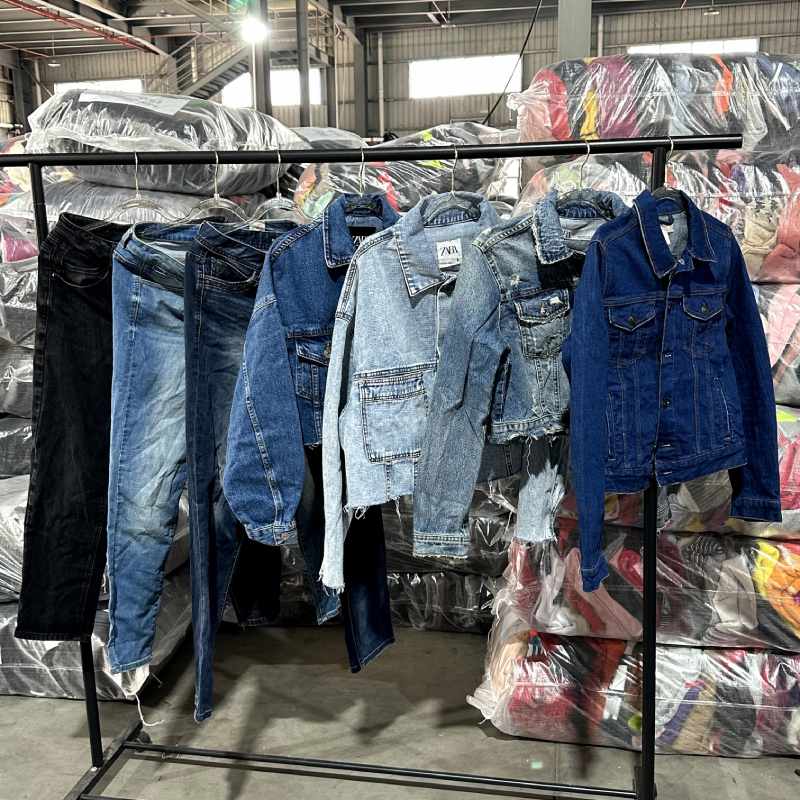
2. The Wild West: Online B2B Marketplaces
Global sourcing platforms have thousands of listings for used clothing bales. It can feel like an endless marketplace of opportunity, but you need to be extremely careful here.
Pros: The selection is massive. You can easily compare prices from dozens of different sellers in one place.
Cons: This is the riskiest option. The photos you see in a listing are almost never the clothes you will actually get. Misleading descriptions are common, and the quality can be far below what was promised.
Pro Tip: If you choose this route, always start small. Order the smallest possible sample. It’s better to waste a little money on a bad sample than to waste a lot of money on a huge, worthless shipment. Read every single review and be very skeptical of sellers with no history.
3. Professional B2B Websites (Independent Suppliers)
This is often the safest and most reliable way to find a great long-term partner. Many of the best suppliers don’t rely on massive marketplaces. Instead, they build their own professional, independent websites to deal directly with their customers.
Pros: A company that invests in a quality website cares about its reputation. You’ll find detailed information about their history, their sorting and grading process, and clear product categories. This transparency is a huge green flag. You are dealing directly with a specialized branded clothing bales manufacturer, not just a trading company that sells hundreds of different items. This expertise usually results in a much higher quality and more consistent product.
Cons: It is important to find a reliable and professional branded clothing bales manufacturer. You have to find the manufacturer through targeted web searches, which can take a bit more effort than browsing a single marketplace.
Pro Tip: Look for signs of a legitimate business. Do they have an “About Us” page with real information? Are there clear photos and videos of their warehouse and their products? Is their contact information easy to find? A professional website is a strong signal that you’re dealing with a serious, trustworthy company.
Key Questions to Ask Before You Buy
Once you’ve found a potential supplier, the next step is to ask a lot of questions. Don’t be shy about this! A good supplier will expect and welcome your questions because it shows you’re a serious buyer. Asking the right things protects your investment and ensures you don’t end up with a thousand pounds of useless inventory. Think of this as your pre-purchase checklist.
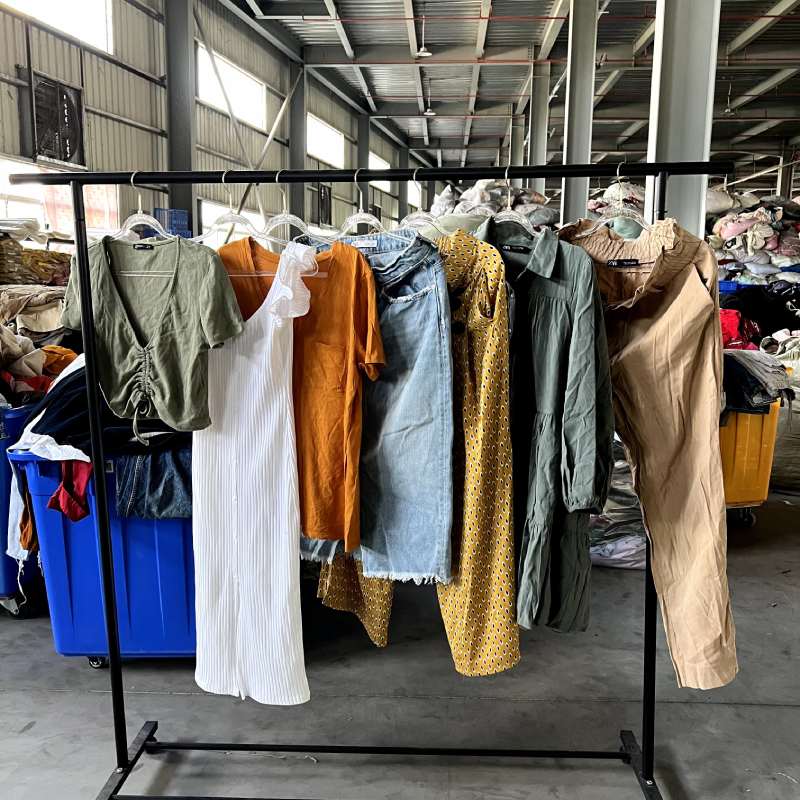
Questions About the Product Itself:
This is all about making sure what you think you’re buying is what you actually get.
- “Can you explain your grading system in detail?” As we discussed, “Grade A” can mean different things to different suppliers. Ask them: What specific flaws would cause an item to be downgraded from Cream to Grade A, or from Grade A to Grade B?
- “What is the typical mix of brands?” They can’t promise you’ll get 50 Nike hoodies, but they should be able to tell you what brands are commonly found in their bales. This helps you manage your expectations.
- “What is the approximate number of pieces per 100 lbs/kg?” This is essential for calculating your cost per piece. A bale of heavy jeans will have far fewer items than a bale of lightweight t-shirts.
- “Is there a packing list or a general category ratio?” Ask for a rough idea of the contents, for example, “Is it 40% tops, 30% bottoms, 20% jackets, and 10% other?” This helps you know if the bale fits your inventory needs.
- “Most importantly: Can I see a video of a representative bale being opened?” Stock photos are meaningless. Ask for a video of them opening a bale that is the same grade and category as the one you plan to buy. This is the single best way to judge the real quality.
Questions About the Supplier and Their Process:
Questions About the Supplier and Their Process:
These questions help you determine if the supplier is legitimate and trustworthy.
- “How long have you been in this business?” Experience and a long track record are good signs.
- “Can you provide references from other buyers, maybe one from my country?” Hearing from a happy customer is powerful social proof.
- “Do you have a physical warehouse I could visit?” Even if you can’t actually go, the answer “yes” is a massive sign of a real, legitimate operation.

Questions About Money and Shipping:
Finally, make sure you understand all the costs and logistics involved.
- “What is your Minimum Order Quantity (MOQ)?” Make sure you can meet their minimums.
- “What are your payment terms?” Do you have to pay 100% upfront, or is it 50% upfront and 50% upon shipping?
- “What is your policy if a bale is not as described?” This is your safety net. What happens if you open the bale and a huge portion of it is damaged or unusable? A good supplier will have a clear claims process.
- “Can you give me a full ‘door-to-door’ shipping quote?” Ask for the total price, including all shipping fees, customs duties, and taxes, to avoid any expensive surprises when the bale arrives.
Asking these questions will not only get you the information you need, but it will also show the supplier that you are a professional. It sets the foundation for a strong, long-term business relationship.
Business Models & Profit Strategies
You’ve done your research, asked the right questions, and your first branded clothing bale has just arrived. It might look like a giant, daunting pile of clothes, but it’s actually a mountain of opportunity. Your profit isn’t made when you sell the clothes; it’s made right now, in how you sort, process, and present them. Let’s break down the proven strategies for turning that bale into a successful business.
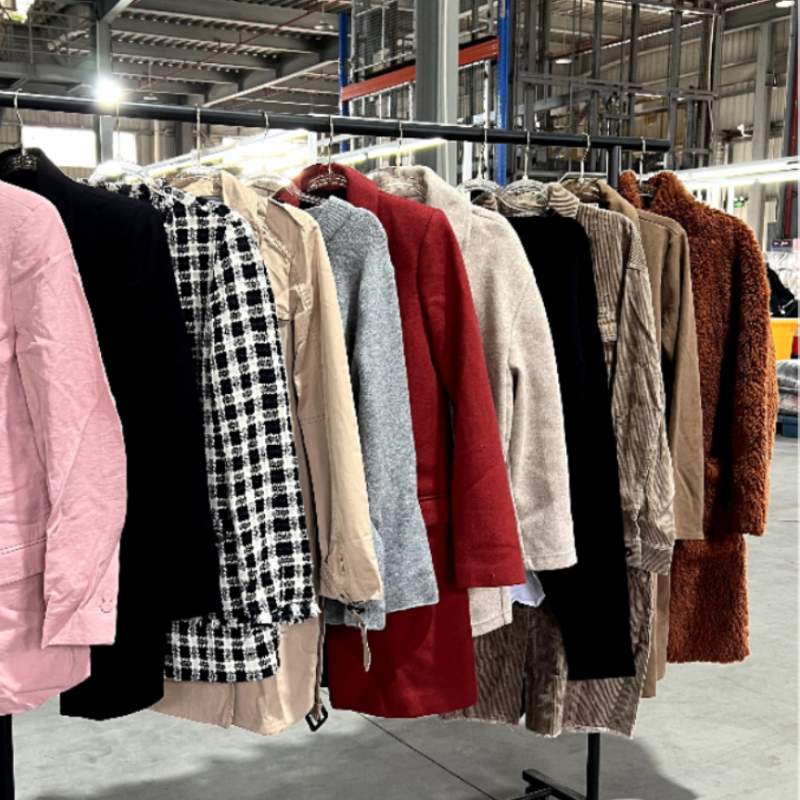
Step 1: The All-Important Sorting Process
Pile A: The Gems (Sell Individually, High Price): These are your star players. The rare vintage t-shirt, the perfect-condition Carhartt jacket, the sought-after designer piece. These items should be researched, carefully photographed, and listed individually on the best platform to fetch a premium price. This is where your biggest profits on single items will come from.
Pile B: The Bread & Butter (Sell Individually, Market Price): This will be the largest pile. It’s full of great, reliable items from brands like Nike, Levi’s, Adidas, and Tommy Hilfiger that are in solid Grade A condition. They are your consistent, everyday sellers. List these individually online or price them for your retail store. They provide the steady cash flow for your business.
Pile C: The Bundlers (Sell in Groups or at a Discount): This pile contains items that are still good but might not be worth the time to list individually. This could be because the brand is less popular, the style is very basic, or it’s a Grade B item. The strategy here is volume. Don’t let them sit around; they are perfect for creating bundles, mystery boxes, or for selling at a lower price point at a flea market.
Before selling, make sure every item is in its best possible condition. A simple wash, a quick steam to remove wrinkles, or sewing on a loose button can dramatically increase the perceived value of a garment. Remember, presentation is everything.
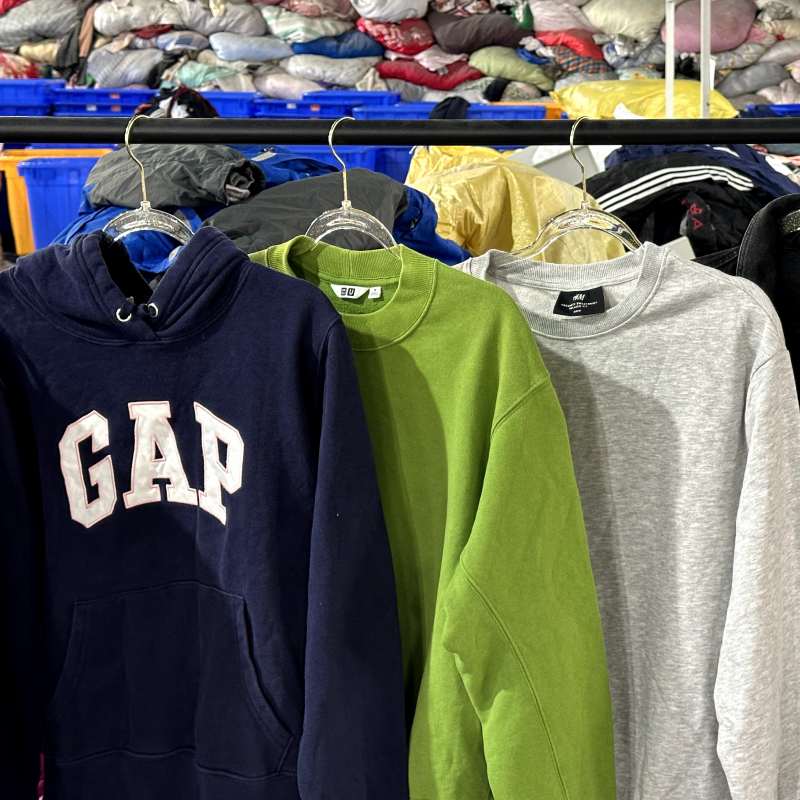
Step 2: Choose Your Sales Channels
Once everything is sorted, you need to decide where to sell it. Most successful businesses use a mix of these channels:
Online Marketplaces (Depop, Poshmark, eBay, etc.): This is the most popular option for resellers. You can reach a global audience of people actively searching for second-hand branded clothing.
Strategy: Use these platforms for your “Gems” and “Bread and Butter” items. Take clear, well-lit photos from multiple angles. Write detailed titles and descriptions using keywords people will search for (e.g., “Vintage 90s Nike Crewneck Sweatshirt Size Large”). Be prepared to answer questions and ship items promptly.
Your Own E-commerce Store (Shopify): This is the next step for serious resellers who want to build a brand.
Strategy: Having your own website gives you full control. You avoid marketplace fees and can build a direct relationship with your customers. It’s the perfect place to tell your brand’s story and become a destination for curated vintage and second-hand clothing. This requires more marketing effort, but the long-term payoff can be huge.
In-Person Selling (Retail Store, Flea Markets, Pop-Ups): Don’t underestimate the power of selling face-to-face.
Strategy: This is a fantastic way to move a lot of inventory quickly, especially your “Bread and Butter” and “Bundler” piles. You can sell items at a slightly lower price because there are no shipping costs or seller fees. It’s a great way to generate immediate cash and connect with your local community.
Creative Bundles and Mystery Boxes: This is a hot trend.
Strategy: Take five t-shirts from “Pile C,” all in the same size, and market them as a “Vintage Graphic Tee Starter Pack.” Or create curated style boxes. This is a brilliant way to increase the value of your lower-priced items and create an exciting product for your customers.
The key is to match the right product to the right sales channel. By sorting effectively and choosing your channels wisely, you can ensure that you are getting the maximum possible profit from every single piece in your bale.
Conclusion
The world of second-hand clothing is full of incredible opportunities, and buying branded clothing bales is one of the smartest and most efficient ways to build a profitable inventory. As you’ve learned, the path to success isn’t complicated, but it does require a clear strategy. It’s about understanding the product, finding a trustworthy supplier, asking the right questions, and having a solid plan to turn those clothes into cash.
More than anything else, your success depends on the quality and consistency of your supply. The right wholesale partner does more than just sell you a product; they provide the foundation upon which you can build your entire business. They act with transparency, deliver consistent quality, and understand what you need as a reseller to thrive. Finding that partner saves you time, money, and countless headaches, allowing you to focus on what you do best: curating and selling amazing clothes. If your target market is Africa, you can also check our guide on the TOP second hand clothes supplier in Africa to find reputable partners.

